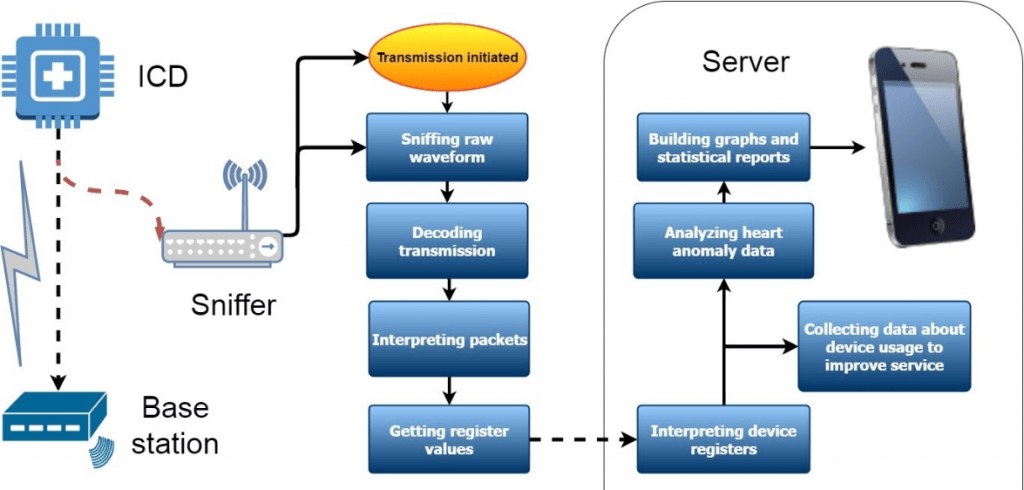Sniffing Data from an Implanted Heart Defibrillator
Over on Hackaday a team are attempting to reverse engineer the RF data logging portion of an implanted cardiac defibrillator (ICD) as their Hackaday prize entry. An ICD defibrillator works by monitoring heart condition and automatically applying gentle shocks to put the heart back into a stable rhythm if an abnormal rhythm is detected. Modern implanted defibrillators log heart data and transmit the log daily to a base station, which is then forwarded to the doctor for analysis.
Unfortunately patients who are interested in taking a more active approach to their health (such as one member of the team who herself has an implanted defibrillator) do not get to see this data. The team are hoping to use an RTL-SDR to sniff this data which is transmitted in the 402 – 405 MHz ISM band, and then implement a decoder. So far they have successfully been able to capture some signals, and are working on decoding them into data.
By reverse engineering the signal they hope to draw attention to the fact that healthcare providers are not providing real time body data to the patient, preventing them from making their own informed decisions about their health. They write:
It’s all about making informed decisions. A patient knowing about arrhytmias episodes that occured to him/her has the power to change his lifestyle accordingly, by deducing the factors that have influenced his recent attacks and eliminating them – i.e. observing his/her heart condition according to his/her sleep schedule, work rhythm, food choices and participation in sports. As for now, the patients can only hope to get some information on ICD-prevented arrhytmias on scheduled appointments with their doctor, which often occur once a year or even less often. This eliminates any possibility of making informed choices by using patient’s lifestyle data for future arrhythmia episode prevention.
